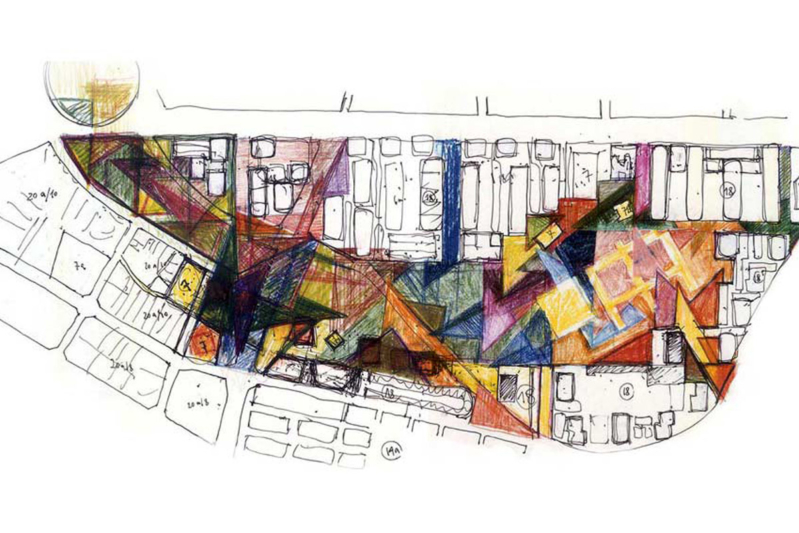For us the beginning of a design always consists in getting to know a `place´.
The project evolves from the place itself, which is not merely the backdrop, limiting and hindering the design. In our analysis of a place, meaning the site and the people, we uncover guidelines determining the design.
Our first visit to a place is very significant. We experience its atmosphere with all our senses. Not only the architecture of the place becomes clear to us, but also their other distinguishing features: how it is used, which points, lines and levels evolve from its uses, the automobile traffic, pedestrian routes, open-air events, and gathering places.
We especially notice what addresses the senses: the background noise, sunlight, wind and vegetation. We also observe the surroundings of the place: its topography, the course of streets, the height of the buildings, the density, history and life styles of the neighborhoods. After making these observations we decide which features we would like to emphasize in the design and which to tone down in order to lend the place character. We also collect historical information. With the help of city maps, photographs, anecdotal, newspaper and literary descriptions, we seek out how and why the city of today developed as the result of many different interventions in the course of time. We merely add another one and thus further rotate the wheel of history.
We design with intuition and feeling and with as little material and expenditure as possible. This minimalism rationalizes and simplifies the design, making it sensitive and convincing. Our construction materials are almost always traditional: brick, stone, wood and metal. Yet we use them in unusual ways and in an utterly un-classical manner.


Approach
For us the beginning of a design always consists in getting to know a `place´.
The project evolves from the place itself, which is not merely the backdrop, limiting and hindering the design. In our analysis of a place, meaning the site and the people, we uncover guidelines determining the design.
Our first visit to a place is very significant. We experience its atmosphere with all our senses. Not only the architecture of the place becomes clear to us, but also their other distinguishing features: how it is used, which points, lines and levels evolve from its uses, the automobile traffic, pedestrian routes, open-air events, and gathering places.

We especially notice what addresses the senses: the background noise, sunlight, wind and vegetation. We also observe the surroundings of the place: its topography, the course of streets, the height of the buildings, the density, history and life styles of the neighborhoods. After making these observations we decide which features we would like to emphasize in the design and which to tone down in order to lend the place character. We also collect historical information. With the help of city maps, photographs, anecdotal, newspaper and literary descriptions, we seek out how and why the city of today developed as the result of many different interventions in the course of time. We merely add another one and thus further rotate the wheel of history.
We design with intuition and feeling and with as little material and expenditure as possible. This minimalism rationalizes and simplifies the design, making it sensitive and convincing. Our construction materials are almost always traditional: brick, stone, wood and metal. Yet we use them in unusual ways and in an utterly un-classical manner.

